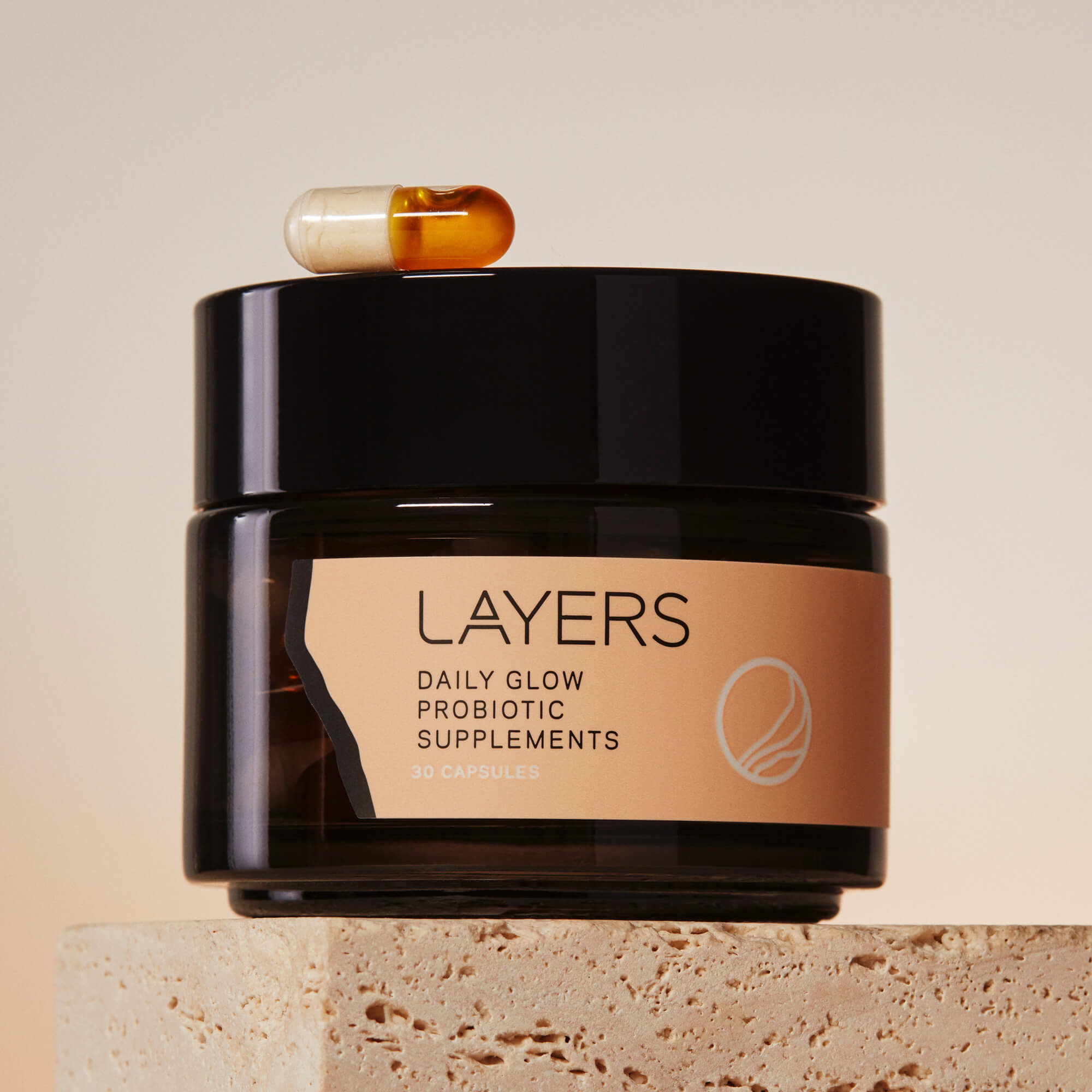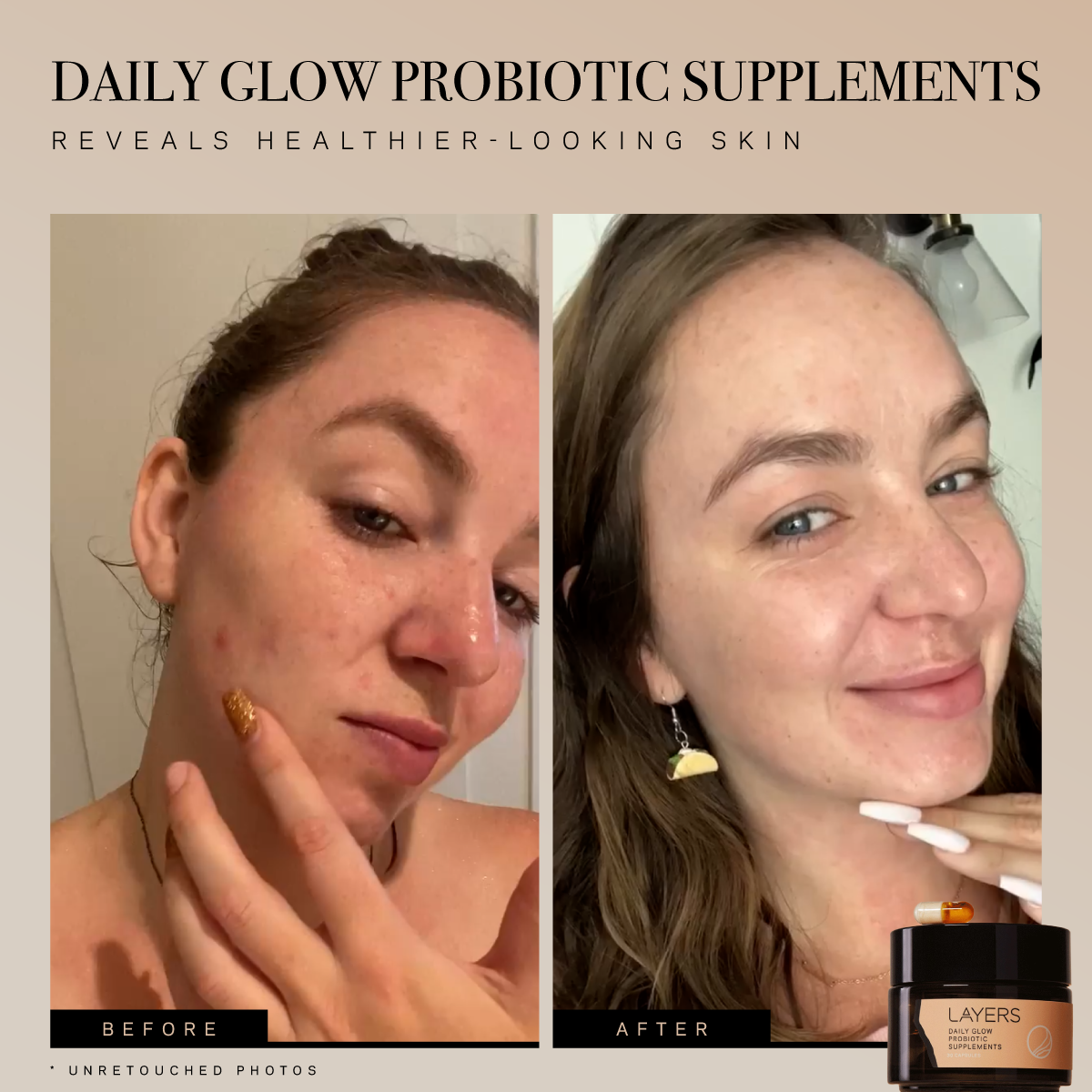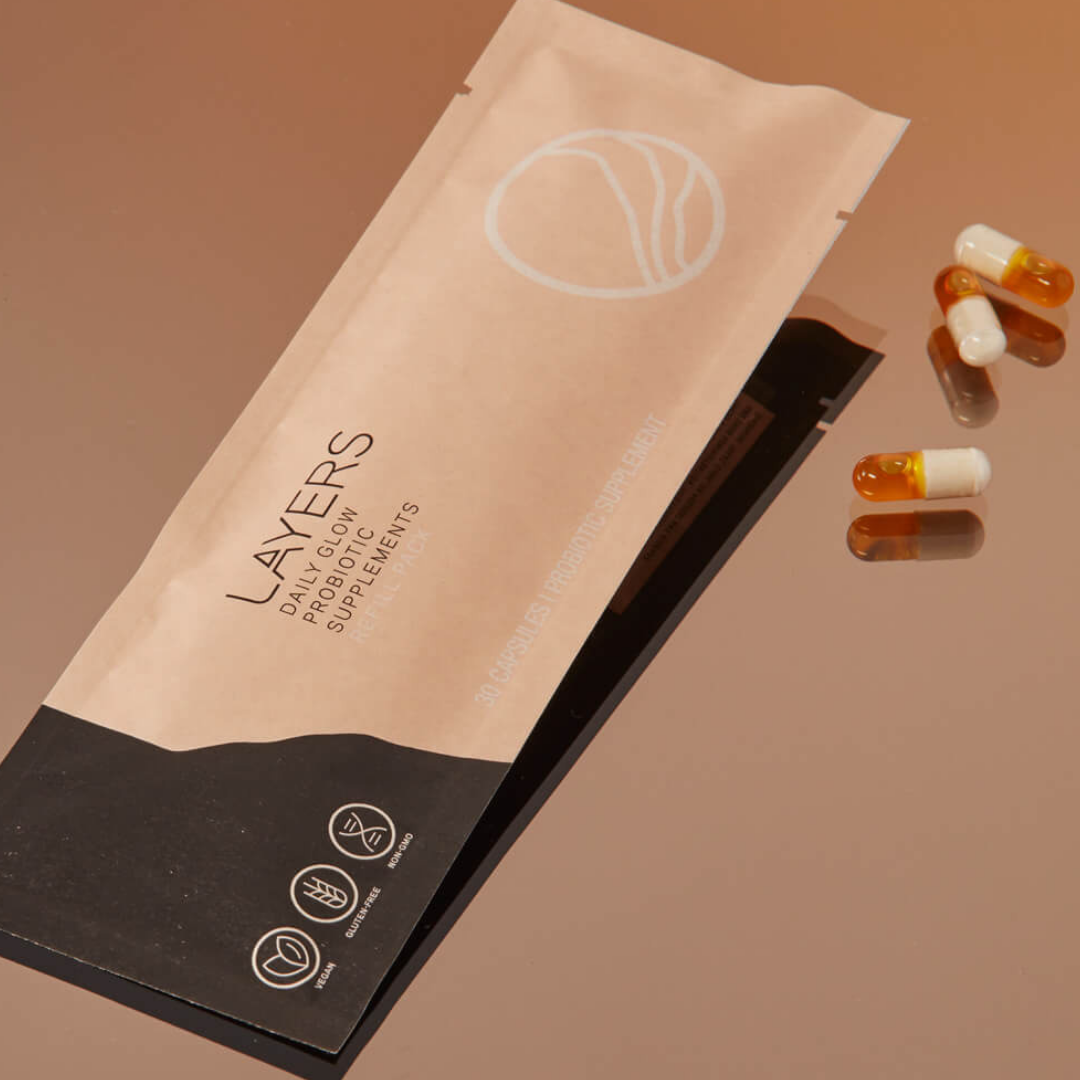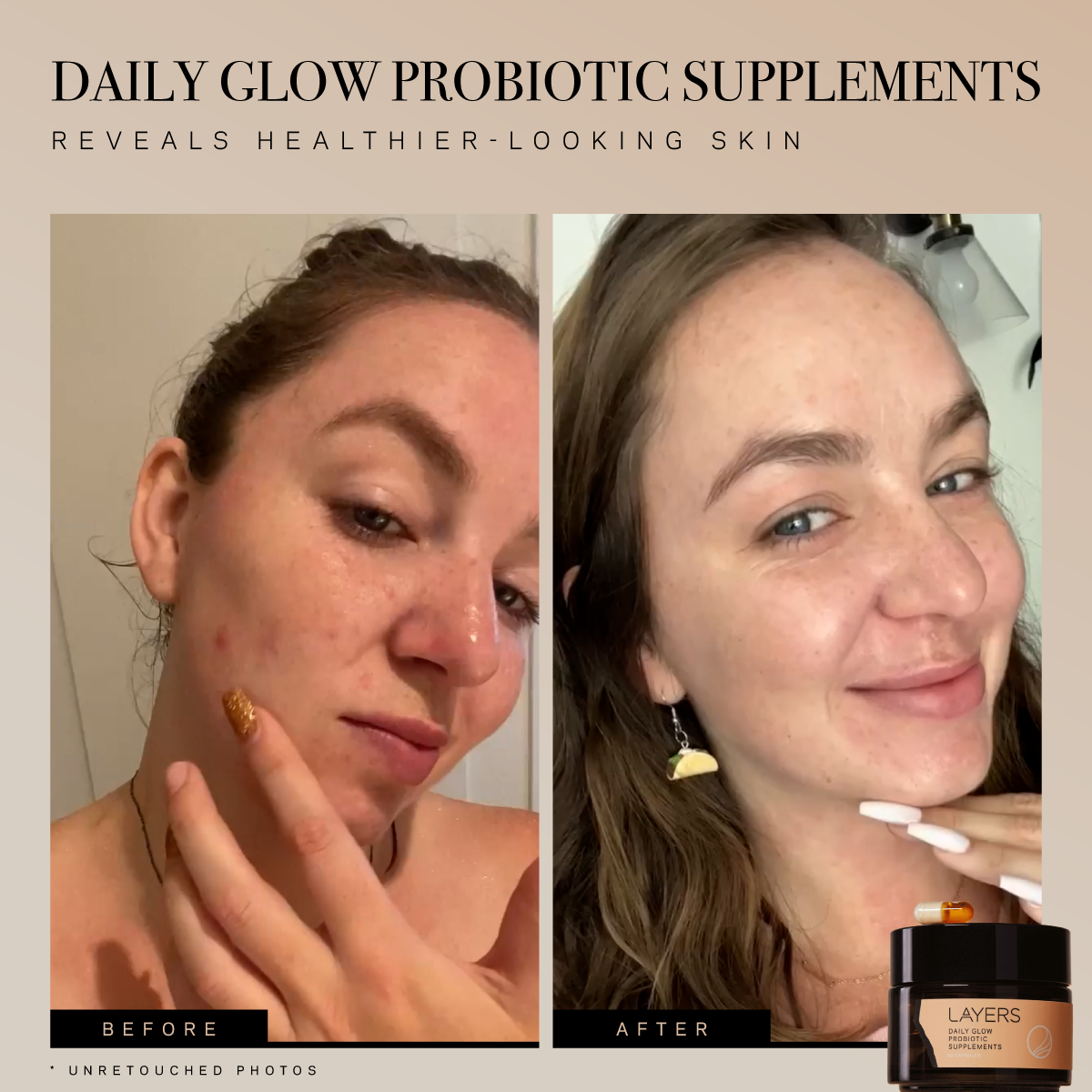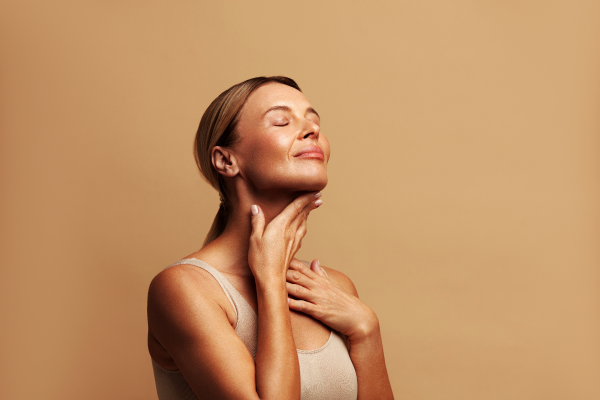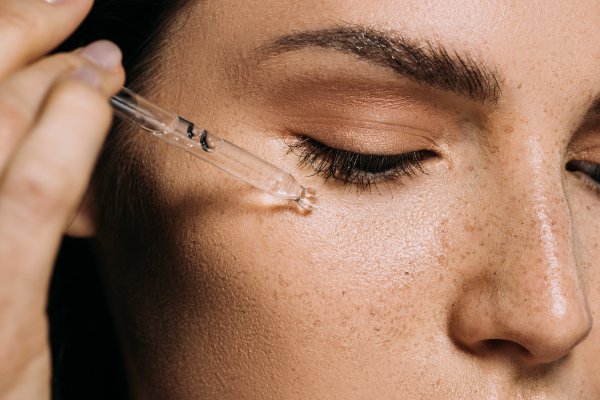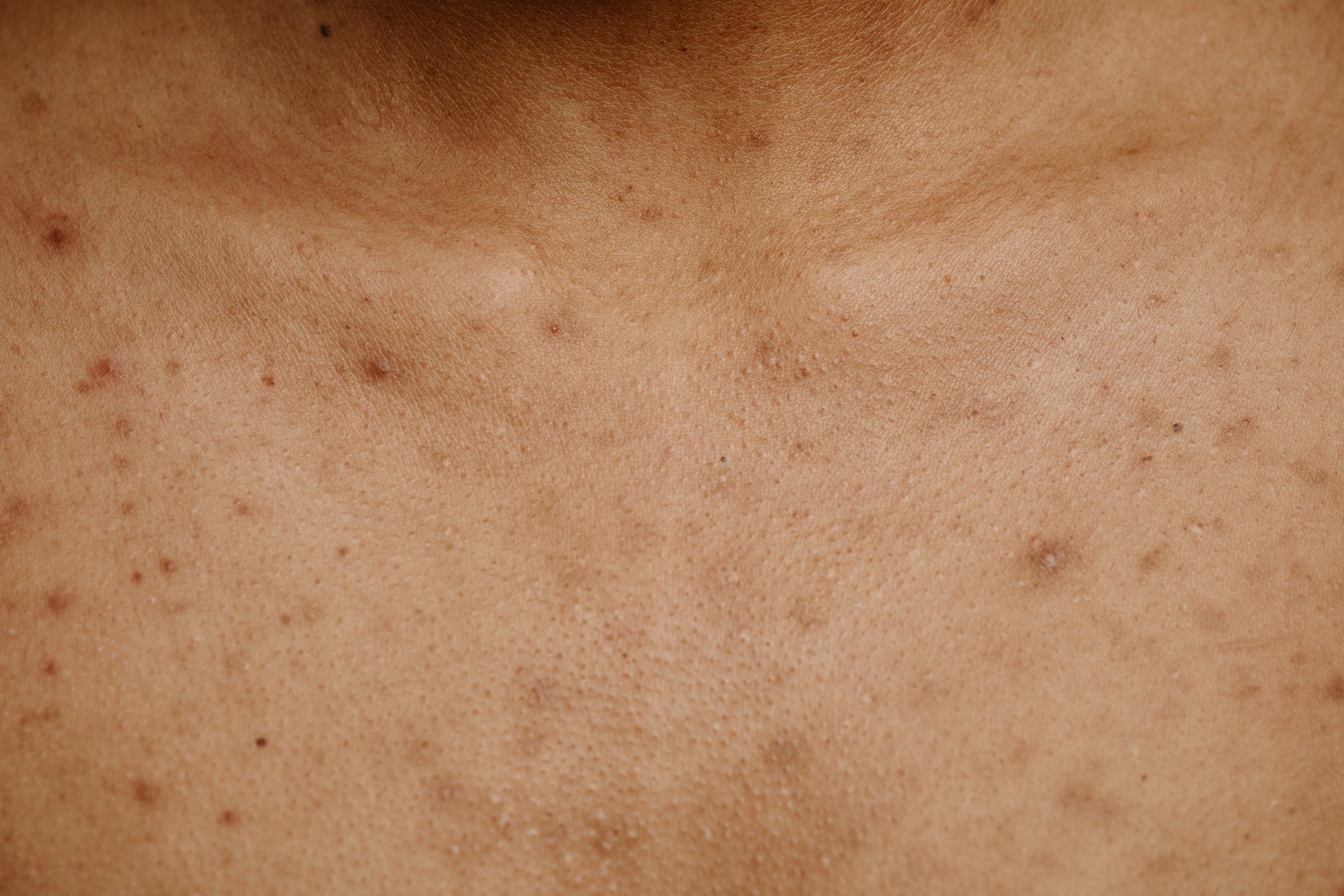You’ve heard about probiotics. Here’s how they’re putting beauty on the path to a cleaner future.
We’ve all heard the saying “Beauty is only skin deep”. Well, we’re calling BS on this ancient idiom because modern science points to something deeper. How deep? Past your skin, down your digestive tract, and straight to the center of your gut. Now, that’s deep.
WHAT’S GUT GOT TO DO WITH IT?
We hear you, Tina Turner. It sounds strange that something we can’t see, let alone rarely talk about in terms of skincare, holds the key to our skin health. Inside of our gut, there’s an environment that, just like planet Earth, needs specific things in order to maintain a healthy atmosphere. We call that atmosphere our gut microbiome.
In order to function properly for the body and support all of our organs effectively, the gut needs a few key elements to maintain that healthy microbiome environment:
-
Healthy fruits and vegetables
-
Fiber like beans and legumes
-
Fermented foods
-
A diet with diversity (eating different fruits and veg, not just your favorites all the time)
-
Foods rich in polyphenols (green tea, blueberries, almonds, red wine, dark chocolate)
A diet rich in all of the above is important because these are the foods that give our gut bacteria the will to do their jobs effectively. Our gut bacteria are the unsung heroes that deserve more of our attention. Their regulation of the gut microbiome is connected to our skin health, or what science refers to as our skin microbiome.
A SHORT HISTORY OF BAD BEAUTY TRENDS
To put it simply, if our gut bacteria don’t like something, our skin isn’t going to like it either- and vice versa. To demonstrate, let’s take a peek back into history where we’ll find a long line of beauty experiments gone badly.
Diving into beauty trends over the last few centuries, we find shocking fads that led to devastating consequences. The bizarre details are outlined in an article by The Cut: The Most Dangerous Beauty Through the Ages.
Ready for a few skincare ghost stories?
-
Lead: In the 18th century, women (most notably, Queen Elizabeth I) were mixing lead with vinegar to make their complexions look smoother and paler. Not only was that lead slowly poisoning them, but it had some nasty side effects like constipation, dried-out skin, gray hair, and abdominal pain.
-
Arsenic: Wafers containing arsenic were sold promising women pale, flawless skin. The arsenic was actually killing off red blood cells, which in turn, would eventually kill them, too.
-
Mercury: Blemish control was “cured” by using topical mercury. But as it absorbed deeper into the skin, the side effects took over: kidney and liver problems, fatigue, irritability, tremors, depression, and even birth defects.
WHAT WE HAVEN’T LEARNED FROM THE PAST
It’s painfully clear that there are some things your skin just doesn’t want to be slathered with. Heavy metals seem like an easy “no thanks”. But even today, there are chemical irritants that can still be found in common beauty and skin cleansing products.
According to the David Suzuki Foundation, an environmental non-profit organization, the beauty industry still hasn’t quite learned its lesson:
“U.S. researchers report that one in eight of the 82,000 ingredients used in personal care products are industrial chemicals, including carcinogens, pesticides, reproductive toxins, and hormone disruptors.”
They point to the following as “Beauty’s Dirty Dozen”
-
Coal tar dyes: p-phenylenediamine and colors listed as “CI” followed by a five-digit number
-
Parfum (certain fragrances)
CLEAN BEAUTY SCHOOL
Consumers are starting to pay more and more attention to the tiny print on the back of the box. We’re educating ourselves about all of the beauty baddies to avoid, but where does that leave us after we’ve navigated ingredient lists, drastically reducing the selection of products we’re willing to shell out for?
Perhaps the biggest buzzword in beauty lately is “clean”. We all want products that are free of the dirty dozen…so what do we actually want in them? While there’s no single, industry-agreed upon definition for what clean beauty means, here’s what it means to us:
Layers products are made without the following:
-
Parabens
-
Mineral oil
-
Petroleum
-
Silicone
-
Phthalates
-
Sulfates
-
Formaldehyde
-
Triclosan
-
Gluten
-
Other ingredients that harm human health and the environment
-
We never test on animals
PROBIOTIC SKINCARE FOR THE WIN
The science of probiotic skincare is one of the largest areas of study within the beauty industry right now. That’s because probiotics are showing pathways towards resolving some of our biggest beauty battles such as dry skin, eczema, rosacea, and acne. Probiotics are the friendly bacteria that already live within your gut and skin microbiome. If you’re already living a healthy lifestyle through regular exercise and a balanced, veggie and fiber-fueled diet, you likely have a pretty healthy gut environment already. Taking a daily probiotic like our Daily Glow Probiotic Supplements will help even further to balance out your gut flora. Good gut flora leads to a healthier microbiome and better-balanced skin health.
A CLEANER BEAUTY FUTURE
So, how are probiotics leading us towards a cleaner beauty future? Because they exhibit the natural power of microbiome balance when it comes to skin health. This means that in order to seek out clean beauty products, you no longer have to pull all-nighters researching ingredient lists. As probiotic skincare science becomes more mainstream, that’s really good news for our skin and the planet.
Clean, probiotic beauty products such as serums containing healthy strains of lactobacillus, moisturizers with naturally-derived plant extracts, and cleansers with both pre and probiotic blends - these aren’t only good for your personal skin health. They’re showing the industry that clean beauty is not only possible but that probiotics can perform in ways that harsh chemicals (bye-bye coal-tar and formaldehyde) cannot.
As we reach for better outcomes in our skin and gut health, we can no longer afford to overlook the health of our planet, either. Probiotic skincare is proving to be a powerful beauty ally that’s also gentler on the environment. Our hope is that this trend towards cleaner beauty that harnesses the power of probiotics helps change the skincare industry. And as the science continues to roll in, we’re feeling very optimistic.
When it comes to probiotics and skincare, it’s like Glinda the Good Witch reminded Dorothy at the end of The Wizard of Oz…the power was inside you all along.

